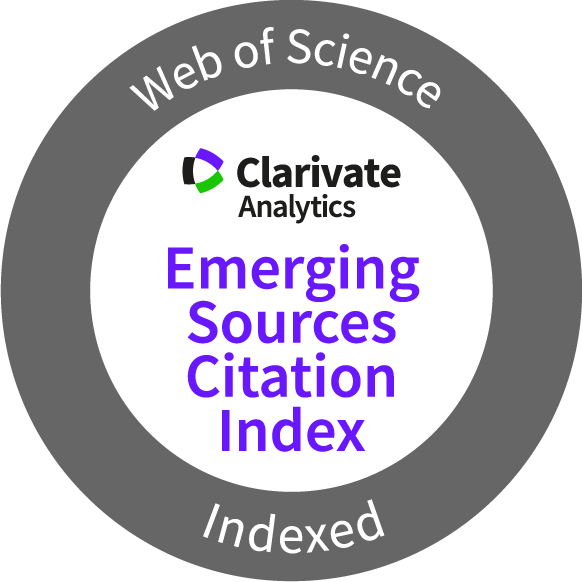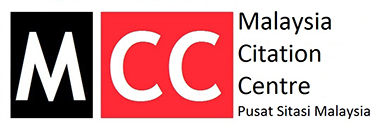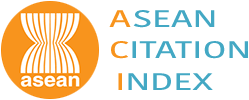Evaluation of Control Methods for Acusta tourannensis (Souleyet,1842) (Gastropoda: Camaenidae) Infesting Dragon Fruit (Selenicereus spp.) in Vietnam
Keywords:
Acusta tourannensis, Dragon fruit, terrestrial snails, integrated pest management, mollusk control, Selenicereus spp.Abstract
Dragon fruit (Selenicereus spp.) cultivation in Vietnam faces severe losses due to Acusta tourannensis infestations, impacting yield and fruit quality. This study evaluated the efficacy of various control methods through field and greenhouse experiments in Binh Thuan Province, Vietnam, in 2023. Cultural practices, including reduced irrigation, herbicide application, and grass cutting, effectively suppressed snail populations by creating unfavorable conditions. Mechanical and manual removal methods, although useful, were labor-intensive. Bait trapping with dragon fruit parts was highly effective in capturing snails. Biological control using duck release significantly reduced snail densities, though contamination risks remain a concern. Botanical control with Saponin HF achieved mortality rates of 86.7–96.7% within 7–14 days. Chemical control with metaldehyde and niclosamide provided up to 100% mortality but necessitates careful management due to environmental risks. Integrated pest management (IPM) combining cultural, biological, and botanical control methods offers the most sustainable approach for managing A. tourannensis in dragon fruit orchards. Further research should focus on optimizing application rates and timing, developing eco-friendly alternatives such as plant-derived molluscicides, and assessing the long-term ecological impacts of these strategies. Enhancing these approaches will contribute to the effective and sustainable management of A. tourannensis, ensuring the viability of dragon fruit cultivation in Vietnam.
Downloads
Metrics
References
Abdallah, E.A., Abdelgalil, G.M., Kassem, F.A., Asran, A.A. & Abou-Elnasser, H.S. 2015. Comparative molluscicidal activity of abamectin and methomyl against Eobania vermiculata (Müller) and Theba pisana (Müller). Journal of Plant Protection and Pathology Mansoura University, 6(12): 1671-1683. DOI: https://doi.org/10.21608/jppp.2015.75786
Abd El-Wakeil, K.F. 2005. Ecotoxicolgical studies on terrestrial isopods (Crustacea) in Assiut, Egypt (Ph.D). Assiut University, Egypt.
Bhavsar, S.S. & Patel, N.G. 2011. Molluscicidal activity of two pesticides against Macrochlamys indica. Golden Research Thoughts, 1(VI): 1-4.
Binh Thuan Provincial Statistics Office. 2021. Binh Thuan Provincial Statistical Yearbook. Statistics Publishing House (in Vietnamese).
Do, D.S., Nguyen, T.S. & Nguyen, V.V. 2022. Terrestrial mollusks (Mollusca: Gastropoda) in Northwest Vietnam. National University Publishing House, Hanoi, Vietnam. 394 pp.
El-Bolkiny, Y.E., Rizk, E.T. & EI-Ansary, A.A. 2000. Effect of diethyldithiocarbamate on some biological and physiological parameters of Momphaiaria alexandrina snails. Egyptian Journal of Aquatic Biology and Fisheries, 4(2): 157-183. DOI: https://doi.org/10.21608/ejabf.2000.1666
El-Deeb, H.I., Ewies, E.A., Kandil, M.A., Gabr, W.M. & Mobarak, S.A. 2003. Toxicity and biochemical studies of methomyl and diazinon on different ages of the land gastropod species Monacha obstructa. Journal of Agricultural Science Mansoura University, 28(9): 7011-7023. DOI: https://doi.org/10.21608/jppp.2003.252489
El-Massry, S.A.A., Ghamry, E.M., Hegab, A.M. & Hassan, A.I. 1998. Effect of certain fertilizers against some snails infesting navel orange trees. Egyptian Journal of Applied Science, 13: 654-662.
Essawy, A.E., Abdelmeguied, N.E., Radwan, M.A., Hamed, S.S. & Hegazy, A.E. 2009. Neuropathological effect of carbamate molluscicides on the land snail, Eobania vermiculata. Cell Biology and Toxicology, 25(3): 275-290. https://doi.org/10.1007/s10565-008-9077-7. DOI: https://doi.org/10.1007/s10565-008-9077-7
Gabr, W.M., Youssef, A.S. & Khidr, F.K. 2006. Molluscicidal effect of certain compound against two land snail species, Monacha obstructa and Eobania vermiculata under laboratory and field conditions. Egyptian Journal Agricultural Research, 84(1): 43-50. DOI: https://doi.org/10.21608/ejar.2006.228937
Hamir, A. 2010. Non-Toxic slug Control. (http://www.gardenguides.com/833-non-toxic-slug-control-garden-pest-tip.html).
Hemmaid, K.Z., Ahmed, S.A. & El-akhrsay, F.I. 2017. Ultrastructural alterations in cells of the digestive gland of Eobania vermiculata (Muller) treated with three chemical compounds. Middle East Journal of Applied Sciences, 7(3): 595-612.
Henderson, I. & Triebskorn, R. 2002. Chemical control of terrestrial gastropods. In: Molluscs as Crop Pests. G.M. Barker (Eds). CABI Publishing: Wallingford, UK, pp. 1-32. DOI: https://doi.org/10.1079/9780851993201.0001
Henderson, I.F. 1970. The fumigant effect of metaldehyde on slugs. Annals of Applied Biology, 65(3): 507-510. DOI: https://doi.org/10.1111/j.1744-7348.1970.tb05519.x
Hien, P.H., Dung, N.V., Thoa, H.T.K., Tung, P.Q., Diep, B.T., Joshi, R.C. & Hoat, T.X. 2024. Terrestrial mollusc diversity on dragon fruit (Selenicereus spp.) cultivation: a case study of A. tourannensis (Souleyet, 1842) (Gastropoda, Camaenidae) in southern Vietnam. Molluscan Research, 45(1): 95-105. DOI: https://doi.org/10.1080/13235818.2024.2433405
Hien P.T.T. 2019. The Dragon fruit export challenge and experiences in Vietnam. FFTC Agricultural Policy Platform. Available at http://ap.fftc.agnet.org/ap_db.php?id=1038 (accessed September 2024).
Hoat, T.X., Quan, V.M., Hien, N.T.T., Ngoc, N.T.B., Thanh, H.M. & Liem, N.V. 2018. Dragon Fruit production in Vietnam: Achievements and challenges. FFTC Agricultural Policy Platform. Available at http://ap.fftc.agnet.org/ap_db.php?id=873 (accessed September 2024).
Hussein, M.A. & Sabry, Al-Kazafy. 2019. Assessment of some new pesticides as molluscicides against the adult and eggs of chocolate banded snail, Eobania vermiculata. Bulletin of the National Research Centre, 43: 75. DOI: https://doi.org/10.1186/s42269-019-0118-6
Kengne Fokam, A.C., Sumo, L., Bagayan, M., Nana-Djeunga, H.C., Kuete, T., Nganjou, G.S.O., Tchami Mbagnia, M.C., Djune-Yemeli, L., Wondji, C.S. & Njiokou, F. 2022. Exposition of intermediate hosts of Schistosomes to niclosamide (Bayluscide WP 70) revealed significant variations in mortality rates: Implications for Vector Control. The International Journal of Environmental Research, 19(1): 12873. DOI: https://doi.org/10.3390/ijerph191912873
Kumar, P. 2020. A Review on Molluscs as an agricultural pest and their control. International Journal of Food Science and Agriculture, 4(4): 383-389. DOI: https://doi.org/10.26855/ijfsa.2020.12.004
Luu, T.T.H., Le, T.L., Huynh, N. & Quintela-Alonso, P. 2021. Dragon fruit: A review of health benefits and nutrients and its sustainable development under climate changes in Vietnam. Czech Journal of Food Sciences 39(2), 71-94. DOI: https://doi.org/10.17221/139/2020-CJFS
Mahrous, M.E., Ibrahim, M.H. & Abd-El-Aal, E.M. 2002. Control of certain land snails under field conditions in Sharkia Governorate. Zagazig Journal of Agricultural Research (Egypt), 29(23): 1041-1045.
Nguyen, T.B. & Do, D.S. 2022. Species composition of Gastropod molluscs (Gastropoda: mollusca) in Lan Chau and Hon Ngu islands of Cua Lo, Nghe An province. Science Journal of Tan Trao University, 8(2): 142-148.
Pieterse, A., Malan, A.P. & Ross, J.L. 2020. Efficacy of a novel metaldehyde application method to control the brown garden snail, Cornu aspersum (Helicidae), in South Africa. Insects, 11(7): 437. DOI: https://doi.org/10.3390/insects11070437
Samy, M.A., El-Fakharang, S.K.M. & Hendawy, A.S. 2015. Population fluctuation and host preference of land snail, Monacha spp. and its control of biocide competed with Neomyl. Egyptian Journal of Agricultural Research, 93(1): 93-106.
Shaker, N., Badawy, M.E. & Hussein, A.M. 2015. Snail control with different and unspecific pesticides. Journal of Plant Protection and Pathoplogy, Mansoura University, 6(12): 1653-1661. DOI: https://doi.org/10.21608/jppp.2015.75783
Shoieb, M.A. 2008. Occurrence and distribution of terrestrial mollusks in Suez canal Governorates and south of Sinai, Egyptian Journal of Agricultural Research 86: 989- 994.
TCVN 12561. 2022. Pesticides - Bio-efficacy field trials.
TCVN 13268-4. 2021. Plant protection - Pest surveillance method - Part 4: Fruit crops.
Zala, M.B., Sipai, S.A., Bharpoda, T.M. & Patel, B.N. 2018. Molluscan pests and their management: A review. AGRES- An International e. Journal, 7(2): 126-132.
Published
How to Cite
Issue
Section
Any reproduction of figures, tables and illustrations must obtain written permission from the Chief Editor (wicki@ukm.edu.my). No part of the journal may be reproduced without the editor’s permission




















